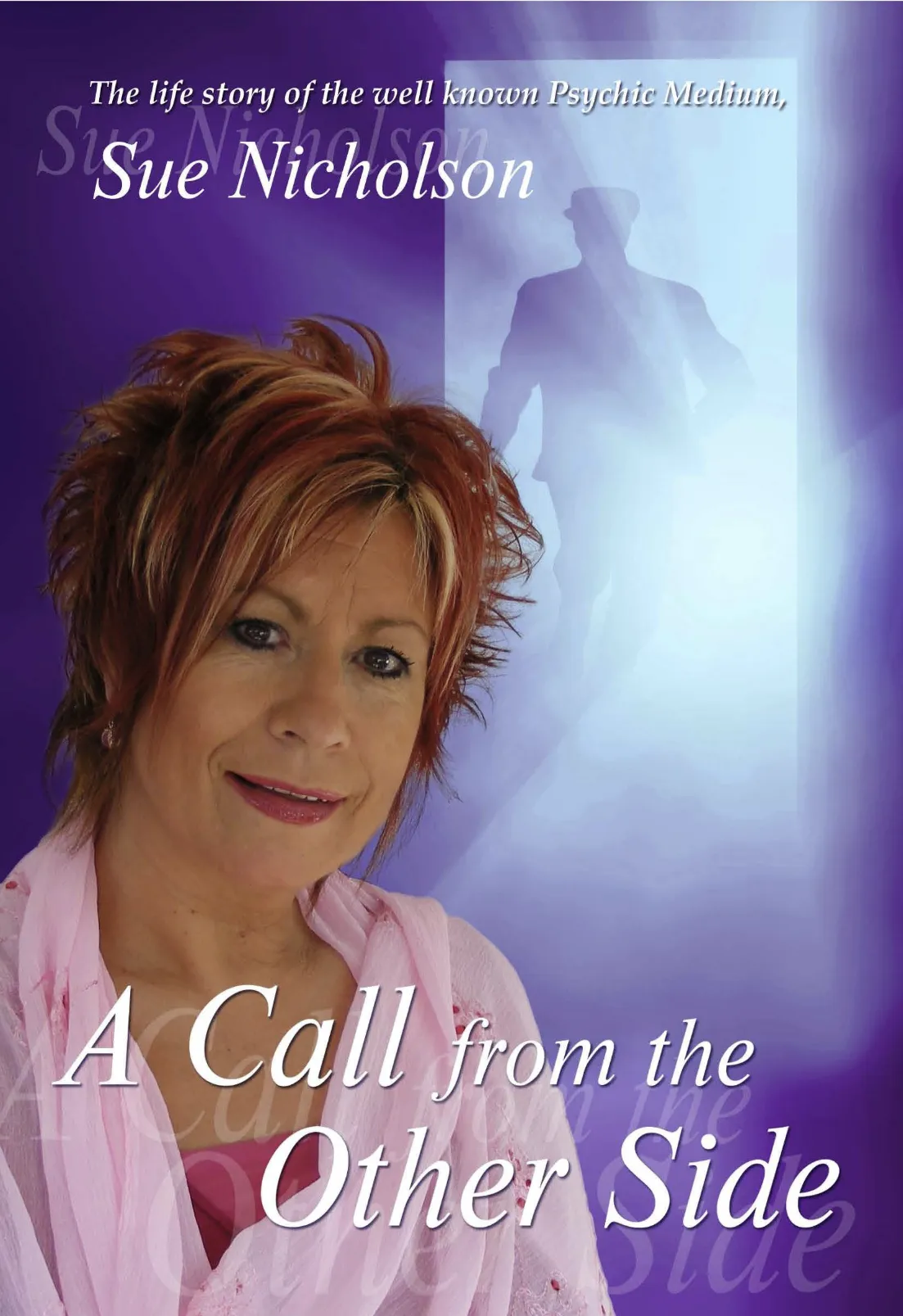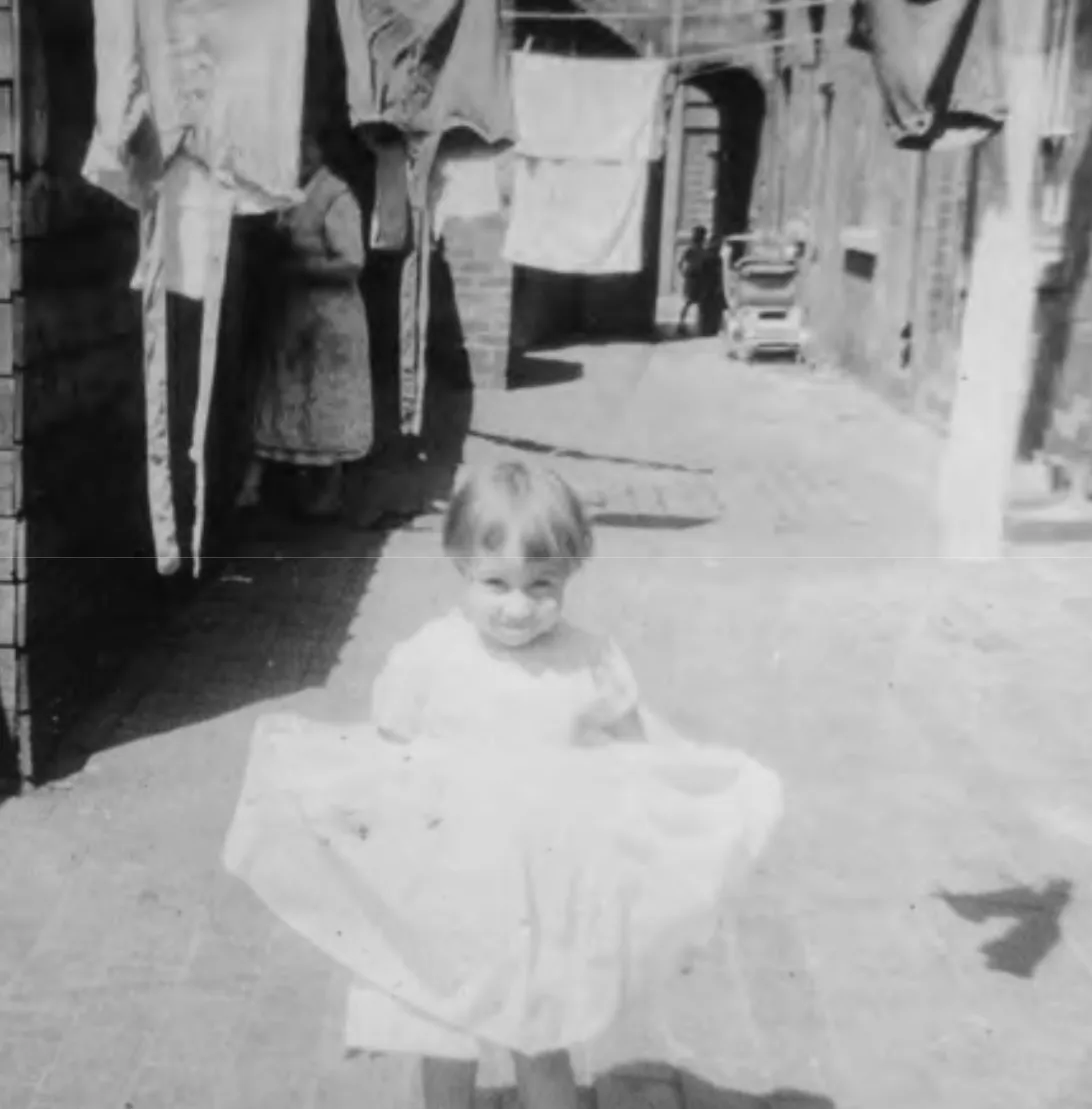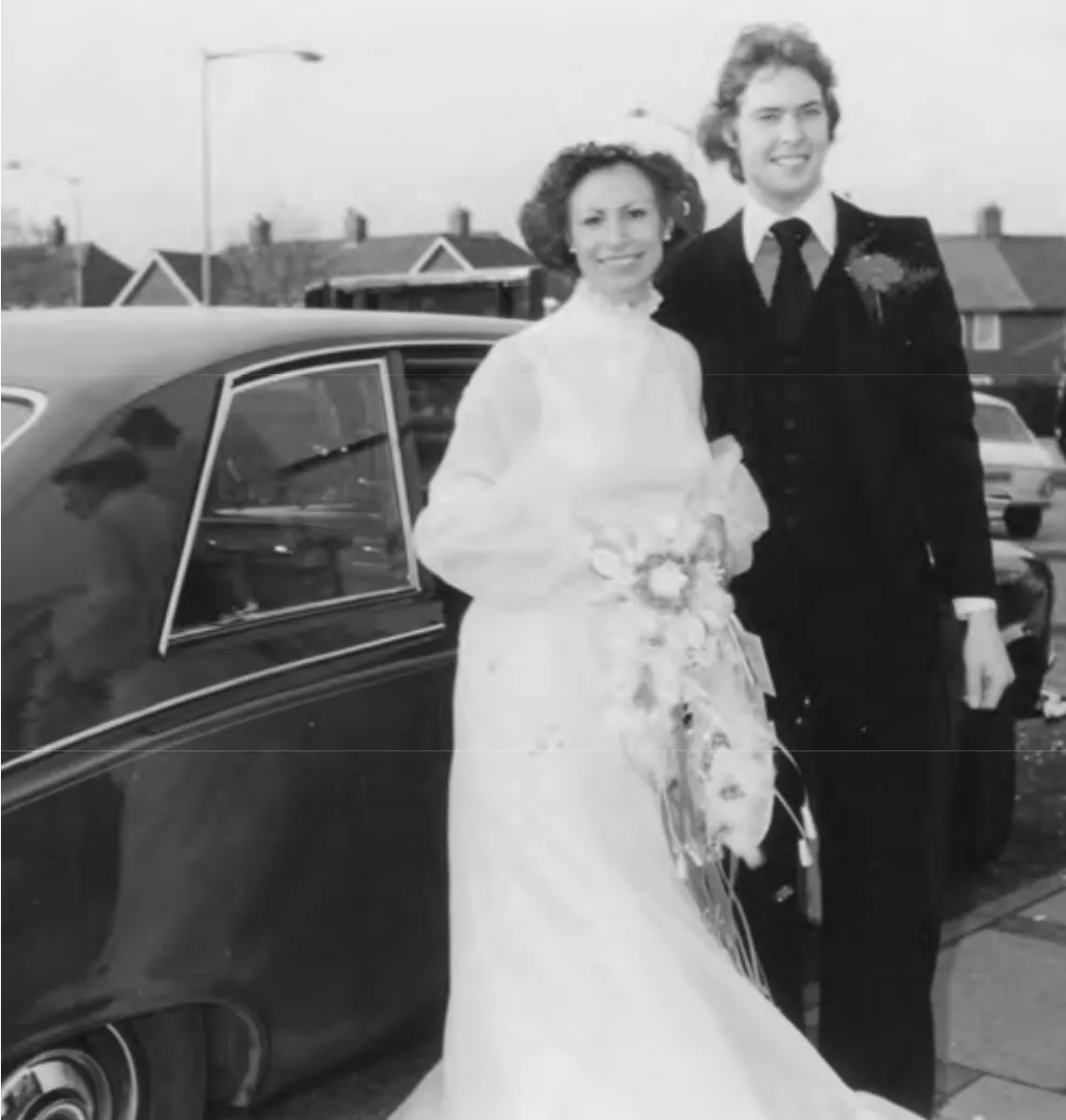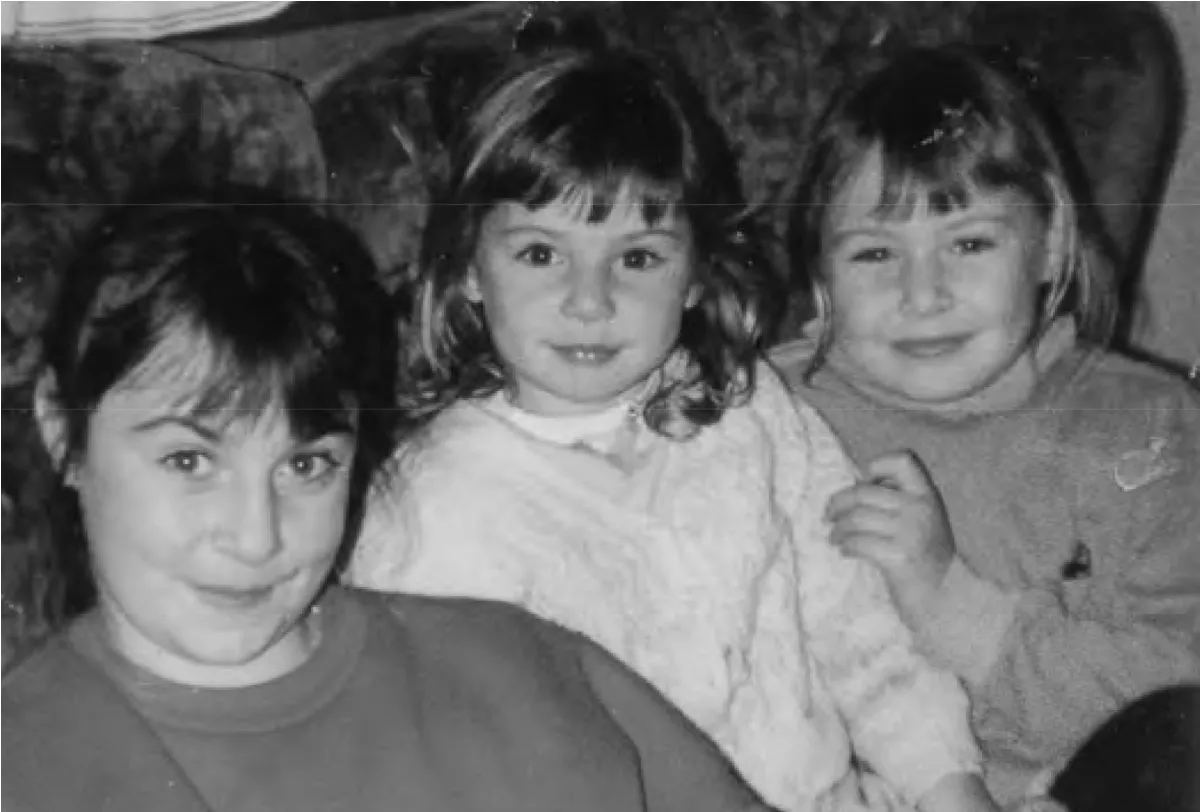A Call from the Other Side
Mark Honeychurch - 10th June 2024
A review of psychic Sue Nicholson’s autobiography, as told to Sue Murray.
I’ve done a lot of book shopping recently, while working on our plagiarism project - and in this time I’ve found some real gems. And, by gems, I mean god-awful books. Thankfully my shopping has been done in charity shops and at book fairs, so these bad books have cost me just a dollar or two each - with the added twin bonuses that a) the money I’ve spent has gone to charity, and b) I’ve removed at least one copy of these books from circulation.
The first book I picked up is Sue Nicholson’s autobiography, titled “A Call from the Other Side”. I originally opened it to look for dates to help fill our Skeptical Calendar (Bronwyn’s big project), but decided once I’d picked it up to actually read the entire thing, rather than just skim it looking for useful dates of skeptical interest.

In the book, Sue begins by describing her belief about psychic abilities and the afterlife, saying that, to her, this otherworldly realm is simply called “Spirit”. Apparently Spirit has talked with Sue since she was young, and let her know that she had signed a contract with them in a previous life that has committed her to passing on messages from them. So she’s not doing this for the money, she’s doing it because she’s contractually obligated to. She just happens to also be business-savvy, and has figured out that she can kill two birds with one stone by charging an exorbitant amount of money for people to access these messages from their loved ones.
Sue talks about going to Sunday School as a child, and how she would ignore what the priests were teaching about Jesus’ commandments, as “Spirit would tell me what Jesus was actually saying”. So, from an early age, it seems that there was a huge arrogant streak in thinking that she knew better than others. Admittedly, in this case, the priests were probably as clueless as Sue was - but them being wrong about God and Jesus most definitely doesn’t mean that Sue was right.
As Sue describes it, her childhood was a harrowing one. Growing up in one of the poor areas of Birmingham, England, with a frequently absent father (who would disappear each weekend for a two day drinking session with his brothers) and an emotionally abusive mother. If Sue is to be believed, her mother was kind to her brother and sister, but only ever said horrific things to her, such as “You are no good. Nobody will ever like you. You will have no friends and you will never do any good in this world”. Sue tells stories of being mistreated by everyone in her family, while also recounting incidents where she gave as good as she got - including the time she apparently hit her brother over the head with a metal teapot.

Sue, aged 3, in her back yard
In the midst of this abusive home life, Sue appears to have retreated to a place where she regularly saw dead people, some of whom would talk to her. She was able to win games such as “guessing the colour of the car before it comes round the corner” and hide and seek so often that her friends didn’t allow her to play any more (apparently Spirit was helping her to cheat). She would hide in the back garden on a deckchair under a blanket, and read through the Akashic Record of her past lives - this continued until she left home at 23 years old. She supposedly has the ability to ask the Universe any question, and she will receive the answer (but, weirdly, she’s chosen not to use this ability to help those less fortunate or stop wars). Spirit would tell her how special she was, despite her family telling her the opposite. She bargained with Spirit to make the weather change, dallied with Ouija boards, and went on aetherial trips at night, Astral Travelling around her neighbourhood (although supposedly this caused her to think she could also fly during the day time, and she spent a long time at school flapping her arms while running down a hill, repeatedly crashing into a wire fence until it left a dent in the shape of her body).
Sue says that she was illiterate as a child, and that it’s only through hard work that she can now “read and write to a high standard”. Apparently her mother bullied about this and many other things until she attempted to commit suicide, at the age of 10 - with both Spirit and her mother stopping her from jumping from an upstairs window. When she was a little older, a man in a coat and hat visited her for several nights in her dreams, murdering her each night. On the third night he stabbed Sue in the lower back, in her dream, and since then she has had a scar on her back that doctors have always assumed is due to surgery.
Sue worked in a hairdresser’s for a while as a teenager, but then chose not to take on an apprenticeship as the owner of the salon was abusive. Instead she took on a job in an architecture firm, where she had to be given jobs that didn’t include reading or writing. While working there she met her first boyfriend, Roy, who was abusive. She ignored the warnings from family members, friends and Spirit, and decided she was going to marry Roy. However, after she learned through Astral Travelling that Roy was cheating on her, Sue took matters into her own hands. To teach Roy a lesson, while he was out one night with another woman, she attempted to commit suicide in his bedroom by taking an overdose of aspirin. It was during this overdose that Sue first visited heaven.
Heaven, according to Sue, is a high-rise mansion with long corridors on each level (the “halls of healing”), bustling with people coming and going. Each corridor has rooms for healing, where people’s spiritual wounds are treated before they can move on to the next level of the mansion. Sue learned during her visit that hell is just another word for life on earth. After receiving a tour of the mansion and being told about an area for treating “suicide people”, Sue woke up, at 4am.
Sue vomited in Roy’s sink, at which point Roy came home and asked what she was doing. She told him “I tried to kill myself. I wanted you to find me dead”. Apparently, even after this incident, the two of them continued dating until 6 weeks before their wedding, when Roy announced that he was going to marry another woman.
After this, Sue became a recluse for a year before meeting the man of her dreams, Steve. Sue married Steve a few months after meeting him, moving into a council after living with his parents for a while. She fell pregnant pretty quickly, and was worried about the health of her baby until Jesus visited her to reassure her that everything was going to be okay. Sure enough, Sue’s daughter was delivered safely.

Sue on her wedding day
After the birth, Steve suggested that the family should move to New Zealand, as there was an engineering job that would suit him, and would pay for all relocation expenses. Sue admits in the book that she didn’t even know where New Zealand was when she agreed to move. They landed in Auckland on Boxing Day 1979 (a date that’s now in Bronwyn’s Skeptical calendar), and moved down to Wainuiomata in Wellington - which Sue could never remember how to pronounce, so she just told people instead that she lived in “Why buy a tomato”.
In Sue’s early years in New Zealand, a friend invited her to visit a clairvoyant. Sue says she could feel a dark, evil energy when she was in the waiting room, and that when she went in to sit with the clairvoyant, it became clear that the woman was a witch. Apparently their witch’s circle had an unfilled space, and the clairvoyant could feel Sue’s psychic abilities so she invited her to join the coven. Despite warnings from Spirit, Sue agreed, and attended her first circle meeting. At the third meeting, Sue broke the circle (a big no-no, apparently) and left, but realised after visiting a healer that she had been cursed. She was referred to an Indian healer, who along with the Archangel Michael helped her to break the curse.
Sue says that she has brought her three children up to be psychic, training them by asking them to guess what colour sweet she held in her hand, and telling them to always “go to the light”. At one point a ghost that looked like one of Sue’s daughters haunted their house, breaking their washing machine and tumble dryer by leaving hair clips in them, and constantly hiding the remote control and her husband’s lighter. After Sue gave the ghost a talking to, the lost items eventually turned up. I swear this sounds just like my house, but I blame my three gorgeous children rather than a ghost.

Sue’s three children
Sue learned alternative therapies, such as magnetic healing and Reiki. During a Reiki training session, Sue says she went into a meditative trance and met the founder of Reiki, a samurai who lived in a castle. Reiki taught Sue to let the Universe take on the pain of healing others, whereas before she had been taking on this burden herself - like the time she healed a friend’s ear infection, but then a few days later had an infection herself. Of course, this is because she psychically transferred the infection to herself.
After walking into a concrete pillar at Auckland airport, Sue started to see dark spirits around her, and often became depressed. Six months after the injury, and 18 years after she’d met Steve, Sue decided to become a psychic medium and came clean to Steve about her special abilities. She told him:
“I can see dead people on the other side. I see and hear the angels. I know things before they happen. I know if someone has an illness”
Steve’s response sounds a little skeptical:
“Well good on you, if you think you can do it, go for it then”
Soon after this Sue faced her “darkest fear”, which turned out to be a dream about the attic of a spooky mansion. In this recurring dream she finally chose to enter the attic, and was confronted with an evil version of her that looked like the Devil. Then Jesus turned up in a flash of light and rescued her, telling her she had passed the test.
After this Sue was free to start her business as a psychic, offering her services to clients she was already giving massages to. She needed $300 to buy some business cards and crystals to get started, and managed to convince Spirit to rig a bingo game that came with a prize of, you guessed it, $300.
Having put a single business card up in a local supermarket, the first call she received was from a journalist called Fiona who wanted to write about Sue’s life story. When the article came out, Sue was upset that it didn’t include her phone number for potential customers to call. However, after this hiccup was sorted out, Sue picked up lots of business and started running, as she describes them, “Tupperware-like” parties, where she would entertain a group of friends for an evening before presumably convincing one of the attendees to host their own “Guardian Angel Evening” which would introduce Sue to a new set of people she could ask to arrange their own evenings, and so on, like a parasite feeding off successive unwitting hosts.
Like most psychics, Sue has built up her own idea of how the spirit world works, and is keen to let people know the details in the later part of the book. Of course, it doesn’t really matter that her ideas don’t match with those of other psychics - none of these people are actually trying to prove their abilities are real, much less taking efforts to falsify them by trying to prove that they might be wrong. Like religious groups who are happy to work together when they’re fighting the encroaching wave of secularism, equality and human rights for all, psychics are happy to work with each other and simply ignore that each of their ideas about the spirit realm is different, and often incompatible.
Sue mentions that she has three spirit guides. The first one, Margaret, was an elderly member of the English Spiritualist church. The second is an unnamed man. And the third, and most worrying, is a Chinese doctor from the Ming dynasty (1368-1644 AD). Sue sometimes speaks in a Chinese accent when channelling this doctor, and after giving people a medical diagnosis (such as mercury poisoning or needing spinal surgery) she always tells people not to mention they received their diagnosis from a psychic when visiting their GP for treatment. She also claims to have counselled terminally ill and suicidal people, which, given that she is not a trained counsellor, is horrifically negligent of her. She even claims to tell people with terminally ill children that she doesn’t allow any sadness or tears during the reading, and that only positive thoughts are allowed.
There’s occasional lip-service to doubting, like when Sue asks Spirit why people’s names don’t always come through correctly and she gets them wrong. Apparently, Spirit says, it’s the fault of the dead person as their antenna isn’t high enough to enable a strong signal. Besides which, apparently being bad with guessing names doesn’t make for a bad psychic - that psychic may just have different abilities, like aura reading or automatic writing (two of Sue’s specialties).
The last part of the book deals with Sue’s appearances on the TV show Sensing Murder, and her life since becoming “famous”. Clients are now less interested in knowing whether to buy a new fridge, and more likely to ask questions about missing or dead relatives. At this point in the book, for me as a skeptic, there’s a heavy feeling of horror at the idea that Sue comfortably pretends that she knows the grisly details of people’s deaths, and is “consoling” family members by telling them just-so stories.
One of Sue’s weirder claims is that she was a black slave in a previous life. She relays how she always felt empathy when watching the plight of “coloured people” on the TV, and Spirit showed her a past life where she was captured as a young African boy and sold to a white man who treated her/him like a dog on a leash. As proof of this past life, her dentist told her she has a protruding bone that only black Africans have, and an iridologist told her that her pure brown eyes suggest she used to be “African, Indian or Islander”. Also, in her most recent past life she was a Jewish professor in a concentration camp - and to top it all off, she coincidentally met the reincarnation of the prison guard who took her to the gas chamber in this previous life.
At the very end of the book, Sue talks about how Spirit moved her to write a poem that was important enough to be featured in a book - the International Library of Poetry’s “Honoured Poets of 1998”. This was a specific claim - one that I could actually look up - so I plugged the name of the organisation into Google and immediately found myself reading the Wikipedia page for poetry.com, which back in the 90s and early 2000s used to be a vanity publishing scam:
Science Fiction and Fantasy Writers of America, Inc. (SFWA) have criticized the International Library of Poetry’s business model, describing its practices as “deceptive and misleading” in that they misrepresented their activities as a contest based on the quality of poetry submitted, whereas in fact the quality had little or no influence on the outcome. It was also accused of describing the anthologies it published as a “real literary credit that poets can be proud of” while simultaneously producing anthologies that were available on special order only and which were full of poor quality poetry. When poets receive their purchased volumes they are given a discount to ILP’s convention and are told they are “semi-finalists” for a grand prize. All conference attendees are semi-finalists. Semi-finalists for their poetry contest have also discovered their anthologies are different from other volumes sent to other semi-finalists, featuring the buyer’s work near the front with work from other semi-finalists missing.
The Library of Congress lists Poetry.com as a vanity publisher. Poetry.com is not an accredited business with the Better Business Bureau, which has given the business an “F” rating. In 2004, the New York State Consumer Protection Board launched an investigation into ILP, which it said “takes advantage of people both emotionally and financially,”
Honestly, I’m really not sure how much of this book to believe. I can accept that Sue most likely had a hard life growing up in the 1950s and 60s, but it seems unlikely that her memories of her mother and father only ever being horrific are true. In a way she seems to blame herself, claiming that she chose to be born into this abusive family, as a way to learn some hard life lessons.
Obviously the fantasies about being able to know everything, travel to anywhere, speak to the dead, summon angels and Ascended Masters, and materialise a parking space at will are nonsense, but I wonder how much more of her story of abuse might be a post-hoc fabrication aimed to engender sympathy from the book’s readers. I feel there’s a lot of childish naivety to Sue’s imaginings of a Spirit talking to her, along with a liberal sprinkling of retconning that’s helped to mould her past into the simple story of a psychic with powers from an early age, who slowly learns to use them as she grows and matures.
Having spent a small amount of time talking both over the phone and face-to-face with Sue Nicholson, when we arranged for her to speak at our conference back in 2013, I believe that she believes she has special abilities. Obviously she doesn’t actually have these abilities, and thinking that she does is hugely arrogant. Sue thinks she’s been specially chosen to receive magical powers that most of us don’t have. If that’s not arrogant, I’m not sure what is. But, if there’s one thing I can say in her defence, it’s that she’s never struck me as cynical enough to be deliberately ripping people off. Deluded, yes, but Machiavellian, I’m not convinced.
Throughout the later part of the book Sue has several stories about her interactions with skeptics, and broadly her attitude in these stories is to ignore them and their concerns. As Spirit once told Sue:
“There will always be sceptics who will test you until you totally believe in yourself… You will learn to be stronger”
It might have been better if Spirit had something a little more nuanced for Sue, like the words of Rudyard Kipling:
“If you can trust yourself when all men doubt you, But make allowance for their doubting too”
If this summary piqued your interest, but you want to know more and you’re concerned that you won’t be able to find a copy of Sue’s book to read it for yourself - have no fear. While I was searching online for evidence to back up some of Sue’s claims (which I didn’t find), I stumbled upon a digital copy of the book that she’s uploaded to her website (warning: Sue Murray, who transcribed the text from Sue Nicholson’s spoken words, does not have great English skills, and missing/stray punctuation is commonplace, making the book a little hard to read):